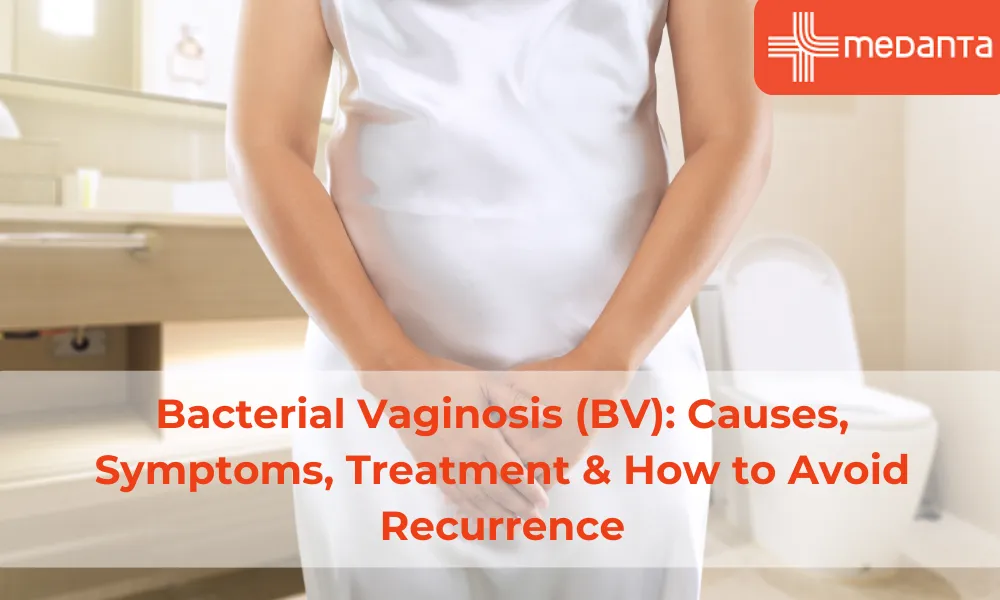Bacterial Vaginosis (BV): Causes, Symptoms, Treatment & How to Avoid Recurrence

TABLE OF CONTENTS
- What Exactly Is Bacterial Vaginosis?
- What Makes Bacterial Vaginosis Different from Yeast Infections?
- Causes & Common Triggers for Bacterial Vaginosis
- Symptoms of Bacterial Vaginosis
- Medical Treatments
- Natural & Home Remedies: What Actually Works
- How to Prevent BV from Coming Back
- When to See a Doctor
- Conclusion
- FAQs
Bacterial vaginosis is the world's most common vaginal infection. Women can get this condition at any age, but it's most common during reproductive years. Many women don't even know they have it because they show no symptoms. This lack of awareness can lead to serious health risks.
The condition does more than just cause discomfort. Women with bacterial vaginosis face higher risks of getting sexually transmitted infections like HIV, HPV, and gonorrhoea. Different ethnic groups show varying rates of infection. Non-white women, especially African American women, have higher rates. The condition often comes back - about half the people who get it will face another infection within a year, even with the right treatment.
Let's look at what causes bacterial vaginosis, its symptoms, and treatment options. You will learn practical ways to prevent it from coming back. This article offers clear, helpful information for everyone - whether you are dealing with your first infection or trying to avoid getting it again.
What Exactly Is Bacterial Vaginosis?
Bacterial vaginosis (BV) happens due to certain bacteria's overgrowth in the vagina. The vagina normally contains "good" bacteria called lactobacilli that produce hydrogen peroxide and keep a slightly acidic environment. BV develops when these protective lactobacilli decrease and other bacteria (mostly Gardnerella vaginalis) increase. Your vaginal discharge changes, and you might feel some discomfort as the bacterial balance shifts.
What Makes Bacterial Vaginosis Different from Yeast Infections?
Feature | Bacterial Vaginosis | Yeast Infection |
|---|---|---|
Cause | Bacterial imbalance | Fungal overgrowth (Candida) |
Discharge | Thin, grey, white or greenish | Thick, white, cottage cheese-like |
Odour | Fishy smell, stronger after sex | No odour typically |
Itching | Mild or none | Often severe |
pH | Higher than 4.5 | Normal (below 4.5) |
Inflammation | No redness or swelling typically | Redness and swelling are common |
Causes & Common Triggers for Bacterial Vaginosis
The following are common causes of bacterial vaginosis:
Having multiple sexual partners
A new sexual partner
Not using condoms
Douching and excessive cleansing
Smoking
Natural lack of lactobacilli bacteria
Using intrauterine devices (IUDs)
Hormonal changes during menstruation
Symptoms of Bacterial Vaginosis
Here are some common symptoms of bacterial vaginosis:
Thin, watery, grey, white or greenish discharge
Strong fishy odour, especially after sex or during periods
Mild burning during urination
Occasional itching or irritation around the vagina
No redness or inflammation of the vulva
Many women experience no symptoms
Medical Treatments
Medication:
Antibiotics serve as the main treatment for bacterial vaginosis. Your doctor might prescribe metronidazole (as pills or vaginal gel), clindamycin (cream or tablets), or newer options like secnidazole (single-dose oral treatment).
Treatment takes 5-7 days, and symptoms usually improve within 2-3 days. You should complete the full course of medication even after symptoms go away to prevent BV from coming back.
Natural & Home Remedies: What Actually Works
Home remedies are effective for mild bacterial vaginosis and can help prevent its recurrence. These include:
Probiotics containing Lactobacillus (either oral or vaginal)
Boric acid vaginal suppositories for recurrent BV
Avoiding irritants like scented soaps and douches
Maintaining proper vaginal pH with lactic acid gels
Stress reduction techniques (exercise, yoga, deep breathing)
How to Prevent BV from Coming Back
Wear cotton underwear that breathes
Avoid douching
Skip scented feminine hygiene products
Use condoms regularly
Wipe from front to back after using the toilet
Limit your sexual partners
Clean sex toys before and after use
When to See a Doctor
Immediately contact your doctor if:
You notice unusual vaginal discharge with a fishy odour
Over-the-counter treatments for suspected yeast infection don't help
You are pregnant and suspect BV
You have changed sexual partners or have multiple partners
You get bacterial vaginosis more than 4 times yearly
You need gynaecological surgery
Conclusion
Bacterial vaginosis is more common than most women realise—and it's nothing to be ashamed of. Many don't even know they have it until symptoms show up or it keeps coming back. The good news is that BV is treatable and manageable with the right care. Understanding what causes it and making small changes—like avoiding scented products, practising safe sex and supporting your body with probiotics—can really help. If something doesn't feel right, trust your instincts and see a doctor. You deserve to feel comfortable and confident in your body. With the right support, you can keep BV from coming back.
FAQs
What causes bacterial vaginosis?
Bacterial vaginosis occurs due to an imbalance in vaginal bacteria. This happens because:
The vagina's healthy lactobacilli bacteria levels drop
Harmful anaerobic bacteria like Gardnerella vaginalis grow too much
Vaginal pH becomes higher than 4.5
What are the most common symptoms of bacterial vaginosis?
Women with bacterial vaginosis typically notice:
Discharge that's thin, watery and white, grey or greenish
A strong fishy odour that becomes more noticeable after sex
A mild burning sensation during urination
BV often shows no symptoms
Is bacterial vaginosis a sexually transmitted infection?
BV isn't an STI or STD. But research shows:
Sexually active people get it more often
The risk increases with multiple partners
Women can pass it to other women during sexual activity
BV rarely affects people who haven't had sex
How is bacterial vaginosis diagnosed?
Doctors use several methods to diagnose BV:
They check if vaginal pH exceeds 4.5
They perform a "whiff test" that detects a fishy smell with KOH
They look for "clue cells" under a microscope
They run PCR tests to find harmful bacteria DNA
Can bacterial vaginosis go away on its own?
Bacterial vaginosis clears up without treatment in about 30% of cases. But doctors note:
Treatment helps relieve uncomfortable symptoms
Getting treatment reduces the possible complications
People without symptoms might not need treatment






